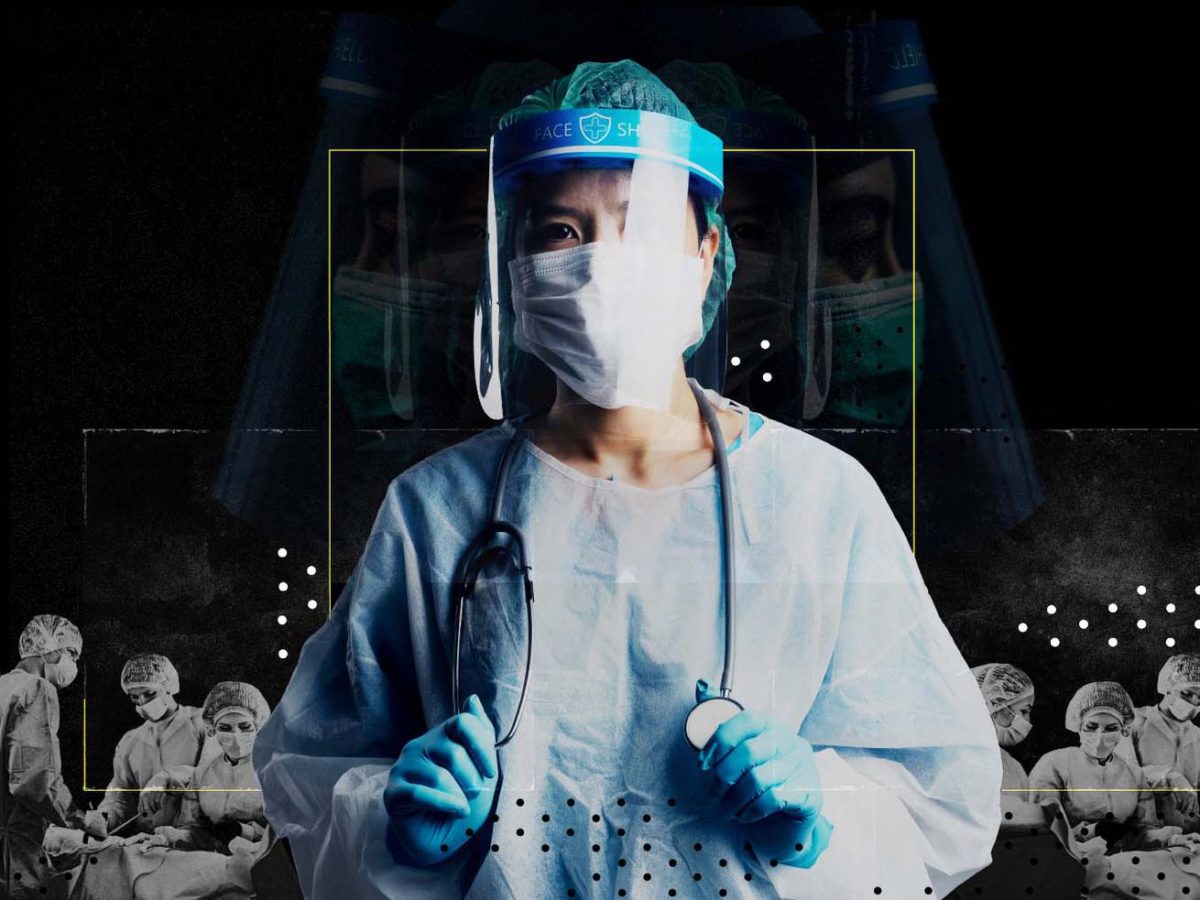This post was originally published on this site

Staff shortages crippled America’s Covid-19 response. That can’t happen again.
Part of Pandemic-Proof, Future Perfect’s series on the upgrades we can make to prepare for the next pandemic.
When Covid-19 first hit the US health care system, the biggest concerns about responding to the crisis were about physical infrastructure: Would hospitals have enough ventilators or physical space to care for a surge of patients? But the shortfalls that limited the American response were ultimately about the country’s human infrastructure: There were not enough nurses in hospitals, not enough staff in long-term care facilities, not enough public health workers.
There still aren’t. With a fourth wave building in December 2021 after the omicron variant emerged, Roberta Schwartz, a senior executive with Houston Methodist Hospital, summarized the conundrum like this: “You can send all the ventilators you want. I have no one to staff them.”
One of the primary lessons of the pandemic is that the United States must develop the ability to temporarily increase our health care staffing capacity whenever the next public health crisis arrives. We can’t magically create hundreds of new doctors and nurses at a moment’s notice. But we can make it easier to use the medical personnel we do have more effectively, to give us a fighting chance in an emergency scenario.
“Surge capacity is probably the name of the game,” Michael Chernew, a health policy professor at Harvard University, told me, adding that it would be difficult and expensive to run a health system at pandemic capacity all the time. “That’s really hard to support.”
So coming up with ways to temporarily expand the health care workforce — creating better protocols for relaxing medical regulations, calling in surge capacity staffing, and better allocating staff across the country in order to respond to the next emergency — is the first preparedness priority after our failures during the pandemic.
But Chernew and other experts also said that there were areas, specifically in nursing and public health, where creating more jobs today could pay off tomorrow whenever another pandemic strikes. It’s not an either/or proposition. The US health system should be better equipped to both handle an unexpected surge and to care for American patients the rest of the time.
Make it easier for more people to practice more kinds of medicine in an emergency
The easiest steps to getting more doctors and nurses start with relaxing some of the regulations that govern what kind of medicine different practitioners can practice. Right now, states have all kinds of rules for who can do what: Nurses may be prohibited from assessing patients or administering medications; nurse practitioners could be required to work under the supervision of a physician; and doctors must have specific certification in order to perform certain tasks.
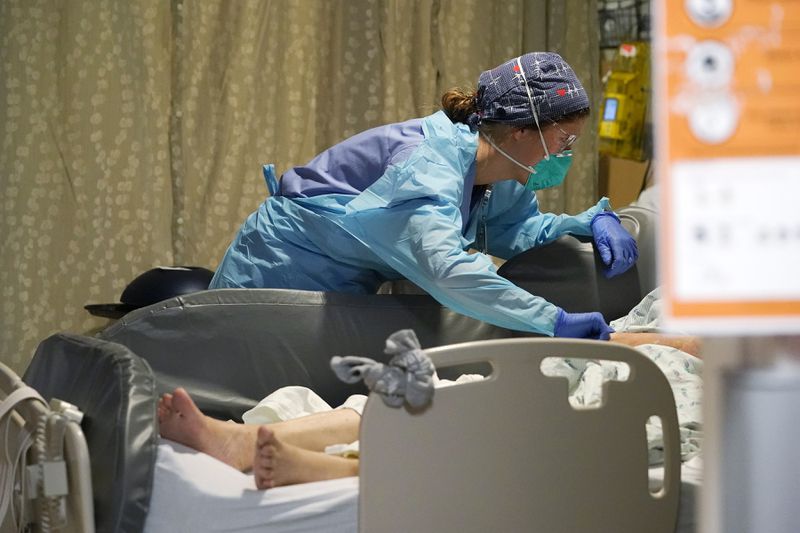
Elaine Thompson/AP
Those restrictions exist for a reason, some of them good (to protect the patients and providers) and some of them dubious (doctors trying to protect their turf and livelihood). But in an emergency, they are a hindrance to getting the most out of America’s medical personnel.
Experts say that in the next crisis, states should authorize people who are trained in medicine but aren’t currently practicing (retired doctors, doctors with an out-of-state or a foreign license, students on the verge of graduating) to start doing that work. They should also permit, to give one example, nurses to administer medicines that they aren’t ordinarily allowed to, which would allow practitioners to focus on tasks that truly require a higher level of training. Both measures would help create more capacity in the health system to handle the surge of patients, as would making sure US medical personnel have adequate protective equipment to prevent them from getting sick and being unable to work.
Many states took those steps in the last two years, but many did not. More uniform adoption of those policies would help the country respond to the emergency in a future crisis while also maintaining care for all the other conditions that continue to threaten people’s health, even in a pandemic.
In March 2020, as Covid-19 outbreaks were exploding, a group of scholars at the University of California-San Francisco drafted a set of such recommendations. First, they urged the state to ease their “scope of practice” requirements, those rules that dictate which providers can perform which tasks and under which conditions. Analysts at George Mason University made similar recommendations in their own March 2020 paper.
For example, the UCSF scholars recommended that nursing staff be allowed to make preliminary assessments of patients and administer some medicines that they ordinarily would not be allowed to. That would free up resident registered nurses (RNs) to perform other duties that require their level of training. They also advised that nurse practitioners (NPs), who have more training than RNs but less than an MD, be allowed to perform their duties without the supervision of a doctor, which could allow them to cover for physicians who need to assist at overloaded hospitals or permit the NPs themselves to go to a hospital system and provide those services.
Other recommendations aimed to increase the raw number of medical personnel in the health system. Right now in many states, you can’t practice medicine with an out-of-state license, and foreign doctors cannot practice in the US without going through an extensive approval process. Medical students can’t start practicing until they pass through a licensing bureaucracy.
These experts recommended granting emergency medical licenses to people with out-of-state licenses and to retired doctors, as well as to people who had studied medicine overseas. Medical students should be allowed to practice up to the level of their completed coursework, they said. Nursing students in their senior year, for example, have often already completed most of their clinical work, with only electives like leadership left on the docket. Easing these restrictions could allow them to put their acquired skills to use during a crisis.

Derek Davis/Portland Press Herald via Getty Images
Some of these measures were taken in many parts of the US, but their adoption was far from universal: 24 states have modified licensing requirements for physicians, 21 states have expedited the licensing of retired or inactive doctors, and 20 states temporarily relaxed scope of practice regulations for nurse practitioners. (Some of the measures were limited in scope and a half-dozen states took no action at all; the rest already give NPs full practice authority.)
“It was totally a mixed bag with that adoption,” Joanne Spetz, a health economist at UCSF who helped draft those recommendations, told me. Ideally, “you can have the people you have now do more and/or you can create more flexibility about where the people you have now can go.”
However, the politics and governance of making these changes, even in an emergency, can be challenging. Doctors’ trade associations are generally resistant to allowing NPs and other workers with less-than-MD credentials do work similar to a doctor. Different states also have different protocols for which agency or official is allowed to relax medical regulations.
Beyond maximizing our current personnel, experts also advocate for creating a reserve of public health workers and nurses who could be called upon in a future outbreak, a kind of National Guard for health care. The Biden White House has proposed such a corp of public health workers, but that idea has not been taken up by Congress.
Betty Rambur, a professor of nursing at the University of Rhode Island, would propose creating a reserve of community nurses as well. Both retired and active nurses could sign up, take part in periodic trainings to keep their skills fresh (much like the National Guard), and, in an emergency, they could be deployed by state or local authorities where they are most needed.
Do more to coordinate staff across states, regions, and the country
Having more staffing capacity — both by utilizing our current medical personnel as efficiently as possible and by calling in reserves in a time of a crisis — is step one. But it does not necessarily help much to have more bodies if they are not in the places where they will do the most good.
“What we did not do so well was work across settings that are not otherwise networked or connected in any way,” Bianca Frogner, a health economist at the University of Washington who studies the medical workforce, told me. “There is no requirement that anybody come together right now to have these conversations.”
Notably, there is no national coordinating group to serve that function. States like Minnesota set up statewide bodies to do so; hospitals in Missouri were doing the same thing outside of official channels, on an informal basis. But this was another area in which the US had a disparate approach during the pandemic.
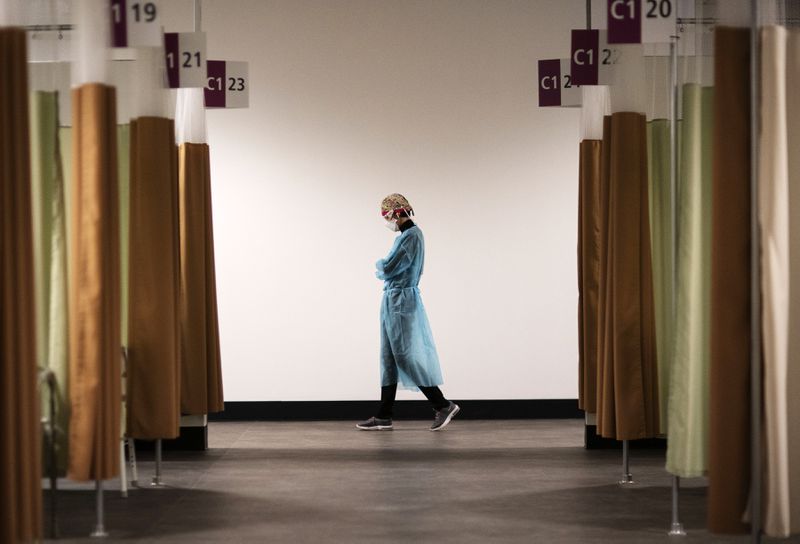
David Goldman/AP
Ultimately, the specific allocation of staff is probably best done at the state or local level, experts say. But there would be a role for a national group in sharing lessons across states.
As Frogner pointed out to me, other states were watching the Northeast in the early stages of the pandemic, observing what they were facing and what strategies were proving to be most effective. But there was no forum for those states now experienced in managing Covid to share the lessons they had learned with their peers.
“Other states were watching, but there weren’t clear channels one can easily learn and apply those lessons,” she said. “There is a need for some kind of a national channel.”
Likewise, if the country were to create reserves of public health workers and nurses, clear protocols for how they would be deployed would be necessary. Rambur envisioned a setup similar to the National Guard: a national infrastructure setting standards and helping to fund these groups, while decision-making on how to use them is left to state and local officials.
Instead, during Covid-19, the responsibility for allocating health care staff across the country over the last two years has often been delegated to travel nursing agencies, which provided nurses to hospitals under duress.
Those roles have offered nurses, often underpaid and underappreciated, an earning power they have never experienced before. But they have also sometimes strained relationships with the permanent staff and put enormous financial pressure on institutions, especially rural hospitals already struggling to stay afloat. Experts doubt a reliance on traveling nurses is sustainable. Private equity is also investing heavily in the traveling market, a trend that has led to worse outcomes in other parts of health care.
“Should you leave it to them?” Frogner said. “I’m not sure.”
Traveling nurses do have a role to play in US health care generally: “They are more expensive, but they meet short-term needs and gaps,” as Rambur put it to me. And nurses are able to acquire new skills when they take temporary assignments, which can pay off in future crises.
But during a public health emergency, the experts I spoke to said, there should also be a role for more formal coordination of staff. The kind of national network contemplated by Frogner could help to share best practices across different jurisdictions, while state and local authorities would be best positioned to make decisions about where to send staff.
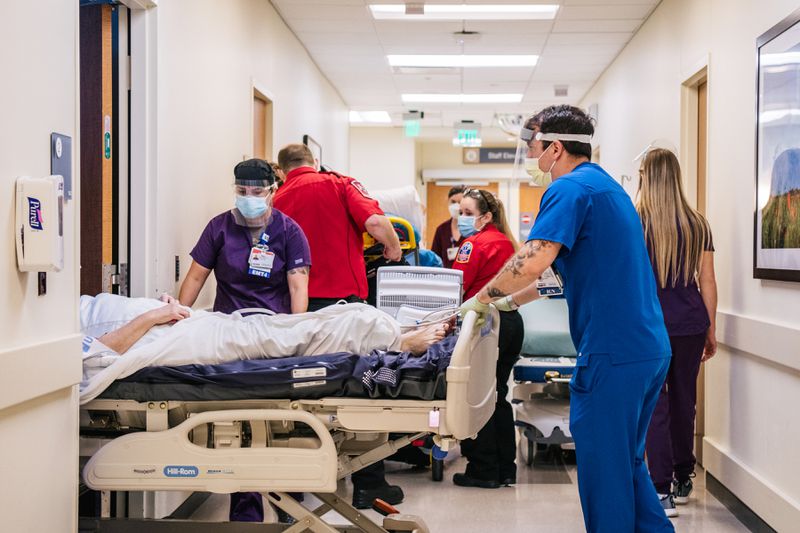
Brandon Bell/Getty Images
Invest now in nurses and public health workers to prepare for the next crisis
Ultimately, the most difficult task is figuring out how much to build up our health care workforce in normal times, which would also leave us better prepared for a crisis, versus relying specifically on emergency staffing surges once the next pandemic is already upon us.
As Hannah Neprash, a health economist at the University of Minnesota, told me, it is not actually clear whether the United States is medically understaffed overall or whether our medical workforce is misallocated by geography and specialty, because (in one example) doctors and nurses tend to practice in the urban areas where they study. Better data would allow us to make better decisions, she said.
Doctors, in particular, are tricky. We need more primary care doctors and MDs who specialize in infectious diseases. But the US does not necessarily need more orthopedic surgeons. The problem is medical school culture and the accumulation of debt by medical students incentivizes aspiring doctors to pursue more lucrative specialties.
Fixing some of the incentivizes would be one way to build a workforce that would be more resilient in the next crisis. Congress already opened up 500 new primary care residencies during the pandemic. But that is a work in progress and experts urge caution; the problem of physician-induced demand — which finds that doctors will provide medical services for reasons other than the actual health of their patients — raises the possibility that we could end up spending more money if we license more doctors without seeing a clinical benefit.
Experts were more confident that the country needs more nurses, nursing assistants, and health aides, though our current investments don’t reflect it. Rambur told me that the US spends about $260 million annually on nurses’ education; spending for graduate medical education is about $15 billion. Balancing the ledger, and other policies such as repaying the loans of nursing students, could help strengthen the nursing pipeline.
More nurses would allow hospitals to hire more permanent staffers, lessening reliance on expensive temporary staff. It would also allow the country to better staff home care and long-term facilities, both strained by burnout because of strenuous working conditions in the pandemic.
Fixing that burnout is another, thornier problem. Hospitals must figure out how they can better retain their nurses, through better compensation and improved working conditions. Health aides in long-term care were singled out as a group that is woefully underpaid given the difficult work they must do. Many of them are paid little more than the minimum wage, which may help explain the astronomical turnover seen in nursing homes.
One glimmer of hope: There has been an uptick in nursing school applications during the pandemic, and some schools are seeing exponentially more applicants than they have spots for. But unless the country fixes the working conditions for nurses and other workers in these important roles, all that enthusiasm could quickly evaporate.
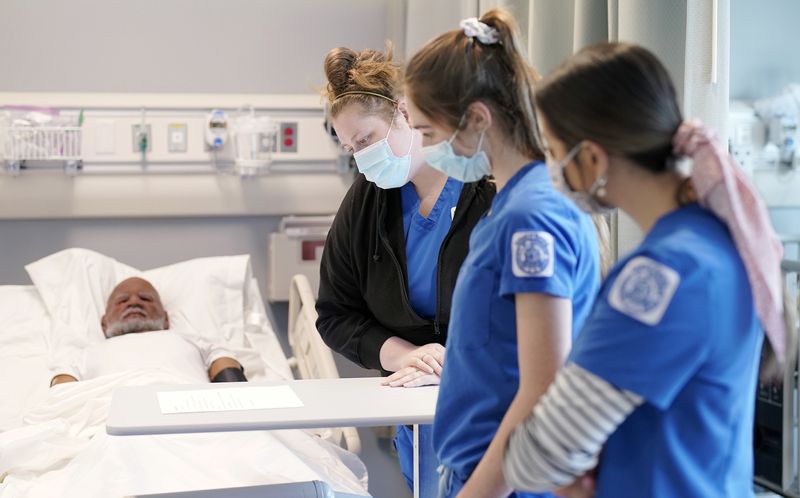
Gregory Rec/Portland Press Herald via Getty Images
“My plea to the nation, let’s really get this system ironed out, so these young individuals who are so highly able and interested and passionate have an excellent experience as they enter the workforce,” Rambur said.
The other critical area for permanent investments would be in public health. Local health departments have been chronically underfunded and that weakness was exposed by Covid-19, when those agencies did not have the manpower to perform disease surveillance and other critical emergency functions as the virus was spreading. Other countries, such as South Korea, had spent the years before the pandemic investing in those capabilities and for a long time they were more successful than the US at warding off the coronavirus with that infrastructure.
Experts have been warning since last year that Congress is failing to make the necessary investments in the nation’s public health infrastructure, which is largely a matter of staffing. One recent report found that 35 of the largest US cities, accounting for one-fifth of the population, currently have twice as many unfilled job openings for epidemiologists as they did in 2019. A collaboration between the CDC and Beaumont Foundation estimated that the US would need 80,000 more public health workers to provide core public health services — from restaurant inspections to disease surveillance and more — in every part of the country.
“We’ve not really had that in this country,” said Betty Bekemeier, who studies the public health workforce at the University of Washington, said. “The general public doesn’t really realize that, but it’s the case.”
The country especially needs investments in data modernization and communications, Bekemeier said, two obvious areas where we faltered during the pandemic. More support for research, in order to identify best practices and the most urgent needs, would also be valuable.
The US could see a multifold return on these ventures. Stronger public health programs would hopefully lead to a healthier population that is more resilient in the face of the next pandemic. And in a future crisis, having those workers already embedded in communities, particularly those Black and Hispanic communities that face structural obstacles to good health care, would allow the public health system to better serve marginalized populations.
“If you’re trying to do a massive vaccination campaign, having more community health workers embedded in communities that are most underserved would be very valuable,” Spetz said. “And when there’s not a pandemic, there’s still plenty of work for them to do.”
